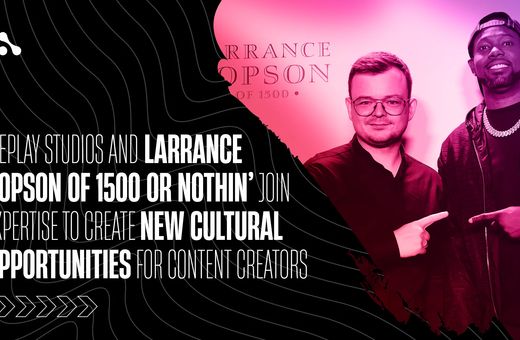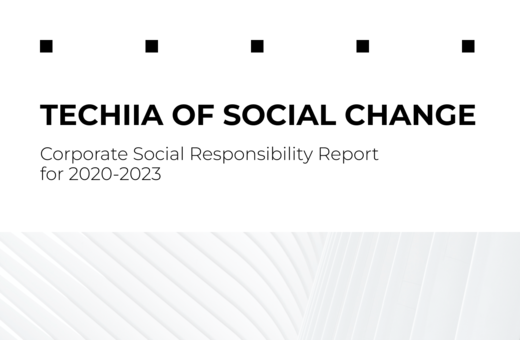
Idea and first mantras.
Ivan Rohovchenko, Chief Design Officer at TECHIIA holding, has been working in the field of design for 15 years, and three of them he has been leading creative teams. Ivan told Telegraf.Design what problems the designer faces as a project manager and how to get used to new tasks. This is the first article in a series about transforming a designer into a manager.
One morning, designer (let's call him ‘Ivan’) suddenly woke up as a manager. And everything in him immediately worked properly. He came to work and did not grab the sketches for the project, did not get into the fonts and layout of forms. No, Ivan clearly divided the creative tasks among the team members. And he conducted an interview, resolved a couple of conflicts at the meeting. After lunch, he calmly drew up a budget for a new project and criteria for future illustrators.
Sounds familiar?
Not for me, no.
During 15 years in design, I have never seen such an ‘Ivan’ — neither in the community nor in the mirror. It is impossible to turn from a creative performer into a confident manager in one night. This is always a long process. Before becoming the design team leader, the designer breaks through a long chain of challenges, doubts, and breaks in thinking. To become an actual leader, not just a business cardholder.
How to distribute tasks in a team? How to recruit people? How to organize creativity? What to look for in the results? What tools to use? How to communicate with other departments? Is it worth becoming/being a manager at all? You will have to find your own answers to these questions.
I will try to give you support in the search. This is not a synopsis of book techniques, even if they are similar in some places, but only recommendations from experience and "stepping on the rake" in working with design teams. Three years ago, it all started with managing a couple of people. Today there are more than 60 designers of almost all specializations. I hope the guide will be useful even if you are new to management, and if you have experience, but periodically are app against a blank wall.
The recommendations are divided into several blocks. Let's start with the basics — the idea to manage.
Three myths about the management, which should be refused at the start
At first, there was a question, and the question was — "why?" Why do you switch to design managers?
Most often in response, I hear that a person wants:
- increase income;
- engage in more cool and complex creative tasks;
- gain fame and status (and nothing to be ashamed of here).
Ironically, none of these arguments can be directly connected to the transition to management.
1. The income of a design manager, art director, and creative director within one company may differ by a few percent. And on a market scale, the average designer of a famous agency will beat the salary of the manager of the creative team of a start-up company. Management is not the first and not the only way to earn more. Money is everywhere. But if you choose the wrong way of development, very soon they will stop inspiring you.
Rarely, but I meet cases when the specialist's work and tasks satisfy him, and the salary — no. This is not a reason to become a leader. The easiest way is to find out how to raise the rating at the current location. Also, through job analysis and interviews, check whether the market is willing to pay more for your existing skills — and how much more.
2. Tasks of the manager do not receive the biggest steepness and complexity. They are changing dramatically. When you switch to management, the design disappears from your agenda. Gradually, but inevitably. The work moves to PowerPoint, Excel, task-managers. You leave the usual creative space and communicate more and more with HRs, managers of other areas, and founders.
For example, I have several design tasks left to design tables, presentations for founders, investors, shareholders on new projects, products, and companies of the holding.
The whole focus shifted to soft skills and classic management tasks:
- set the right goals;
- make a plan to achieve goals;
- develop standards;
- make a budget;
- assemble and teach a team;
- receive and process feedback;
- manage conflicts;
- motivate the team.
Much more will depend on your human qualities than on your ability to draw. If you are ready to grow but want to continue to come up with cool creative solutions on your own, you will feel more comfortable in the role of art director or creative director.
3. Fame, like creativity, in design management goes behind the scenes. You work in the shadows as a special agent. You help others create the most effective things and not be distracted by what is bothering them. The number of your own cases drops to zero. Think about whether this suits you. Hello, harsh reality.
And what instead? In my experience, the path of a manager is more likely to be interesting to those who:
- has worked hard enough and is ready/able to teach others;
- sees, and sometimes "feels" the relationships in the team — and has suggestions on how to make it and its results stronger;
- wants to work with the design process as a mechanism and an organism.
A little exercise. Imagine these items in the form of shoes and try them on yourself. If the color is pleasant, does not press in the toe, does not rub the heel, does not bend the foot, but does not fall, we move on.
Briefly about the possibilities of transition
So, you have become or are planning to become a manager of a design team. How could / may this happen? Promotion always has prerequisites, even if you silently draw logos in the corner. The main reason is that you have started to bring more benefits and value to the company.
In design, as in other professions, there are two ways to increase value. Or the specialist goes deeper: sharpens professional skills, creates more and more amazing creatives, and works faster than others. Or vice versa — expands the context.
As a rule, the second comes to the managerial position. At some point, in addition to the usual completion of tasks, he begins to pick up more. He sees weaknesses in the organization and offers options for strengthening. Helps colleagues, especially new ones, get into work. Picks up "hot" tasks when no one else can. Takes more responsibility for projects. This is a classic way — to get a promotion.
The second option is to change the place of work to get to a higher position. Changing a company, of course, does not solve anything by itself. You need to justify your desire with appropriate achievements. For example, based on how a person brought added value in the previous place.
Sometimes a new position is a forced measure. For example, the project has expanded, it has become more work, and the designer can get new people to help. If he doesn't have the rigid stigma of managing others, it can be a great career move. Have you recognized yourself?
Two mantras for a novice manager
You are in a new professional role. You have been renamed in HR documents. You have made new business cards and a signature in the mail. Most importantly, you already have people under your management. So, it's time for two main changes.
Change №1 — now you have other tasks.
As a designer, you were involved in a linear process: monitoring problems and opportunities -> task formation and prioritization -> design solution development -> testing -> transfer and implementation of the result.
Now the design process needs to be serviced outside of it. You do not create, but provide the conditions for others to create. So now you are responsible for:
- design strategy and development of internal standards;
- team recruitment, training, and management;
- budget planning;
- work with contractors, freelancers, related agencies;
- scaling;
- synchronization.
It seems simple. But even if you said yesterday "I can't stand these sketches anymore", today the brain includes resistance like "yes, I'll do it myself!" The power of habit. There are two options left: either to cherish the old developments or to train new ones in a disciplined way.
Let it get you used to the role of manager…
Change №2 — now the result can be much better.
A real-life example. A few years ago I wanted to learn how to make isometric illustrations. I watched videos, bookmarked courses. I promised myself that next month I would master them. So a year and a half passed since I was overwhelmed with the main tasks.
Once, in the position of manager, I hired a person who, among other things, coolly draws isometry. And then an insight hit me: I don't need to dig into all possible technologies myself! It is enough to find those who will implement design ideas. Sounds obvious, but you would have seen me at that moment.
Then I realized that it was not necessary to hire designers full time. Need a couple of specific illustrations? We will find a skilled freelancer for them. Your next project should include 3D images and you have no 3D artist in the team? Let's hire a professional just for this project.
Do not dive into things yourself — find and manage those who will solve tactical tasks. Now you are the nervous system of a large organism called a "team". Your main task is communication. It needs to be developed as carefully as you once learned fonts, 3D graphics, or UX elements.
So to get started with managerial work, remember:
- you no longer create — you provide the conditions for others to create;
- before all the available skills were inside you, now they are around you.
Singing these mantras, we move on.
In the next article, we will talk about what most beginners and even experienced managers suffer from, and what will first and foremost have to be "destroyed" in your brain.
Original article on .


